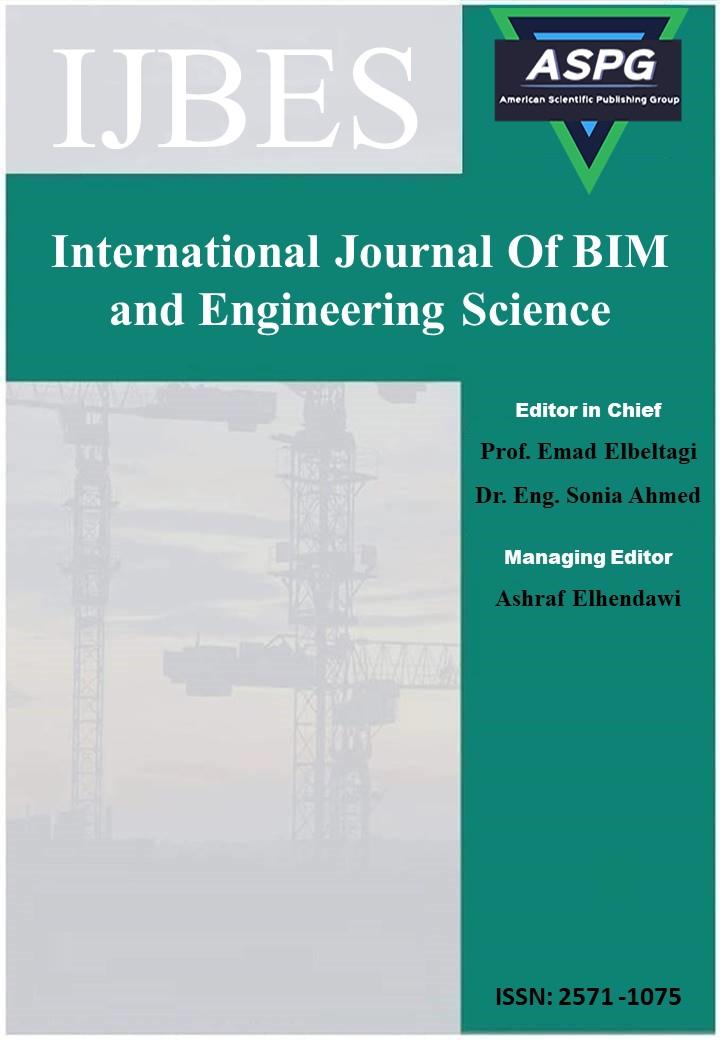

Electrospinning is a technique that generates nanofibers via an electrically charged jet of polymer melt or polymer solution. The significance of this method lies in the tiniest diameter of fibers that can be produced because nanofibers provide more performance advantages in various fields and area as their diameters decrease. Different parameters of electrospinning (solution parameters, process parameters, and ambient parameters) play a vital role in determining the diameter of electrospun nanofibers. In this work, the relationship between the needle diameter and diameter of electrospun poly (vinylidene fluoride) (PVDF) nanofibers is investigated. The results show that there is a positive relationship between the needle diameter and the diameter of electrospun PVDF nanofibers.
Read MoreDoi: https://doi.org/10.54216/IJBES.040201
Vol. 4 Issue. 2 PP. 26-32, (2021)
As a result of the imposed war on Syria since 2011 until now, most Syrian cities have been completely or partly devastated on multiple levels. This urge the needs for developing a comprehensive, balance and sustainable reconstruction strategy. Transportation sector in Syria was subjected to vandalism and systematic destruction. Therefore, the reconstruction strategy should take into account the need to rehabilitate, restore or create vital axes to connect all Syrian cities. Maintaining existed railway lines or constructing new lines require expanding railway stations to meet the expected traffic flow for both passengers and cargo. On the other hand, Building Information Modeling (BIM) has been crystallized as a new technological concept in the construction industry. It is considered a revolution that has transformed the way in which engineering facilities and infrastructures are designed, analyzed, constructed and managed. In such context, the author has applied BIM technology for modeling a real case of railway intermediate station called XiaMen railway station, China. When the modeling process was finished, the station model allows the author to have the needed documentation of station simultaneously. Besides, this model highlights any possible conflicts or design mistakes before the real construction starts. This study makes a novel contribution by providing a new method for 3D digital railway station that motivates designers and contractors to carry out BIM in this vital sector. It paves the way to support the reconstruction phase with modern technologies and its applications.
Read MoreDoi: https://doi.org/10.54216/IJBES.040202
Vol. 4 Issue. 2 PP. 33-48, (2021)
Adoption of Building Information Modelling (BIM) has increased significantly over the last few years, This paper explain the worldwide status of building information modeling (BIM) adoption from the perspectives of the engagement level, the Hype Cycle model, the technology diffusion model, and BIM services. An online questionnaire was published, and 157 engineers from many continents responded. Total, North America was the first among the continents. Countries in Asia perceived their stage mainly as slope of enlightenment (realize) in the Hype Cycle model. In the technology diffusion model, the main BIM-users worldwide were “early majority” (third stage), but those in the Middle East/Africa and South America were “early adopters” (second stage). In addition, the more advanced the country, the more number of BIM services employed. In summary, North America, Europe, Oceania, and Asia were advancing quickly toward the realize stage of BIM.
Read MoreDoi: https://doi.org/10.54216/IJBES.040203
Vol. 4 Issue. 2 PP. 31-44, (2021)
BIM (Building Information Modeling) is an old-new and ever evolving concept, technology, and method of construction, it’s been a while since BIM obligated itself as a necessity not just a luxury, due to the massive benefits it had brought to the AEC industry. BIM is in a constant phase of evolvement and maturity with new ideas and elements being brought up to the table each day, and thus; the BIM level in each project and/or country is in a different level depending on specific factors. In this research we will take a closer look on various countries’ experiences in BIM and what maturity level each one of them have reached, what are the major obstacles standing in the way of Adopting BIM Technology and how to avoid them, with some examples and statistics to enrich the content, and at the end, and after exploring the most possible number of examples around the globe, we will be looking exclusively on the Middle Eastern region’s experience in implementing BIM and then dive deeper to the Syrian current BIM Status, and why Syria is still falling behind in this criteria, how to develop this technology in the future within the nation, what had been done so far to encourage the usage of this technology, and what benefits would it bring to the Syrian Construction and Financial Industry especially under the current circumstances and during the upcoming phase of reconstructing the devastated areas.
Read MoreDoi: https://doi.org/10.54216/IJBES.040204
Vol. 4 Issue. 2 PP. 64-78, (2021)
In Tunisia, the energy consumption associated with the residential building sector has continuously increased over the last three decades. This sector was identified to be one of the most cost-effective sectors for reducing energy consumption by the progress and the use of efficient technologies. Passive and active systems using clean energies are developed to lessen the energy needs and provide a sustainable environment. The Trombe wall system is efficient if it is correctly designed. This study aims to assess the thermal efficiency of the Trombe wall system in the Tunisian climate. To achieve our goal, a promising new technology BIM (Building Information Modeling) is used to evaluate the thermal effect of passive solar heating in Tunisian dwellings. Therefore, Energy Use Intensity, Annual Energy Cost, and Life Cycle Energy Cost parameters are used to assess the performance energetic and environmental of Trombe wall system.
Read MoreDoi: https://doi.org/10.54216/IJBES.040205
Vol. 4 Issue. 2 PP. 79-89, (2021)